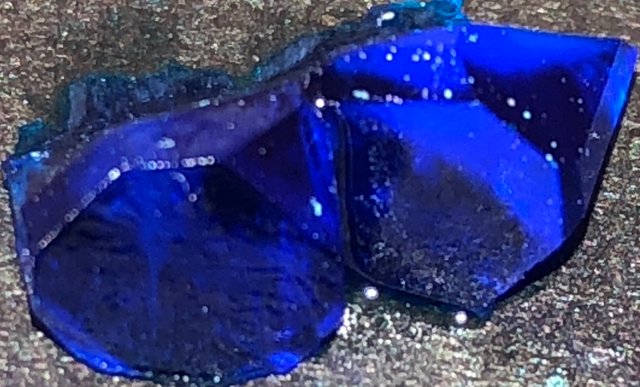Organic Batteries : Rediscovering Alchemy

The organometallic crystals shown here are one of 13 ionic salts identified in the alchemical texts of Hermetic Philosophy, currently being created in our energy research laboratory.
The crystals (above) are ferromagnetic, piezoelectric, magnetoelectric, exhibit quantum optical effects, and absorb and re-emit specific radio frequencies.
When insulated, they take on an electric charge. Our researchers are hoping to exploit these and other properties of alchemical crystals and synthetic stones in an attempt to develop inexpensive organically derived energy storage systems. Ionic electret devices made from these materials have been archeological demonstrated to hold electric charges for hundreds of (and in at least one case over a thousand) years.
The development of these ionic crystals allows for the reintroduction of branches of technology and science that have been lost to history. While not contradictory to our modern science, little is known about these fields of study, because they were built upon a different set of scientific principals. Conversion between the previous branch of science and the path we are currently on is not fluid, but rather a painstaking task of utilizing multiple fields of modern science to understand basic concepts of the older form of science. Directors at our energy research division tell us that is exactly what one of their teams has done.
By combining chemistry, electrical theory, audio vibrational mechanics, resonance theory, and global atmospheric electrical gradient - our researchers have developed a mathematical theory that validates philosophical alchemy and has ties to old world architecture.
Each of the 13 identified ionic salts have their origin not only in Hermetic text, but in samples taken from finials at 47 archeological sites around the world.
For those of you who are wondering what a finial is, they are hollow stone ornaments placed atop megalithic structures and old world architecture. The remains of the mysterious carbon based materials found inside were only recently identified late last year.